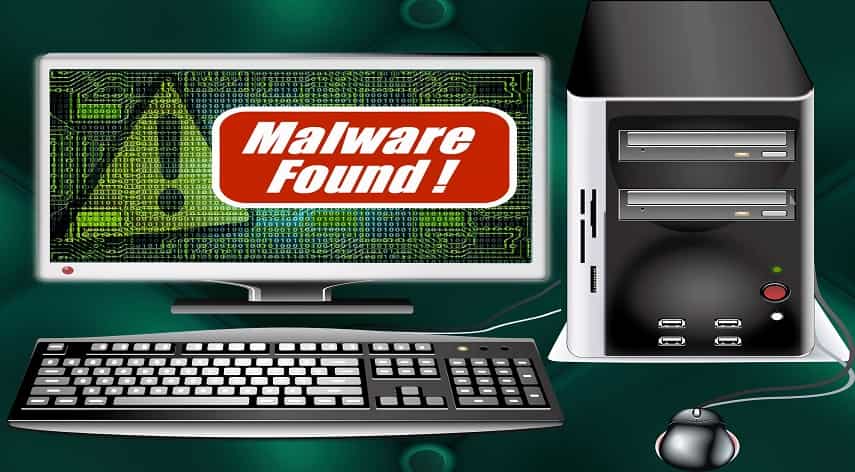New Computer Viruses to Watch Out for in 2022

Did you know that over 560,000 new computer viruses are detected every day? 2020 was the year that brought with it the highest number ever of new computer viruses.
Many of us have had to deal with the fallout of these cyber threats, and it is unfortunately not over yet.
The computer hackers will likely continue to target us in this way in the coming months. That’s why it is essential to keep ourselves as safe as possible by learning about the latest virus threats.
Are you worried about the computer viruses of the future? If so, keep reading to discover the new ones we anticipate in 2022.
Table of Contents
ToggleWhy New Computer Viruses Are Worrying
Malware and viruses are always evolving. They are becoming more advanced every year, making them significantly dangerous. Think about the times you supply your data when accessing the internet.
Whether it is social media accounts, online banking, and other personal data, everything is at risk if you are not careful.
Cybercriminals are relentless. They will not stop trying to hack people’s computers. Even if you do everything carefully, they can still target you.
At any moment, you can be a victim of the latest malware attack or computer threats. Therefore, you must have the latest antivirus software installed on your devices. If you use a Mac, check out setapp.com for more information.
Clop Ransomware
Clop is the best way to demonstrate the dangers of malware. It encrypts your files and “hijacks” them until you pay a ransom to your hacker. The hacker can take over all your accounts, photos, bank details, and more.
For instance, there have been cases where social media influencers with many followers lost their accounts to hackers. A hacker would change your passwords and log you out.
Then they would demand that you pay some money to re-access your account. This is risky because you never know if the person you send the money will return your accounts to you.
Clop is one of the most dangerous viruses and targets Windows users. Before the encryption process, Clop blocks hundreds of Windows processes.
Then it disables multiple applications, especially on Windows 10. You end up with zero chance of protecting your data when this happens. Now Clop can target entire networks instead of individual devices.
Hidden Ransomware
Have you ever had someone randomly send you an email with a link to click on? Hackers are notoriously sending emails that instruct people to install urgent software updates.
Or they may pretend to be from your bank, saying that your account has been compromised and that you need to click the link to log in.
Many email service providers and antiviruses cannot block these emails or attachments. Therefore, it is always a must to check who the sender is. If you feel something is off about an email, it is best to delete it.
Zeus Gameover
This is part of the Zeus malware and viruses family. It acts as a trojan disguised as a legitimate platform. The reason why this is dangerous is that it can access all your sensitive bank information.
What makes things worse is that this variant does not need a centralized server for command and control. It can complete transactions without them. So, it can bypass centralized servers and create independent ones.
Always be careful not to give anyone your sensitive information, especially if there is no way of tracking your stolen data.
Fleeceware
This new computer virus charges app users a lot of money. Even if you delete the app, it does not matter. Although Fleeceware is not a significant threat to your data or device, it is still common.
Many app developers wanted to cash in on people who do not notice how much they are being charged, which is why they came up with Fleeceware.
Cryptojacking
Now that cryptocurrencies are valuable assets, it is no surprise that hackers keep finding ways of stealing people’s wealth.
Cryptojacking malware uses people’s computing skills to mine cryptocurrencies like Ethereum and Bitcoin. Mining needs a lot of computing power to create new coins.
Therefore, hackers are installing cryptojacking malware on people’s devices to gain an edge with mining. This also slows down a person’s device significantly.
Even though cryptojacking has reduced in the past few years, it remains a threat. Cryptocurrency may have crashed recently, but investors are still making money. This is why hackers will always try to create viruses and malware because it is such a lucrative industry.
Artificial Intelligence
Many cybersecurity companies are using machine learning and artificial intelligence to combat malware. However, these can be exploited by hackers on a massive scale.
Cybercriminals need to spend a lot of time and resources hacking others. So, with the expansion of machine learning and artificial intelligence, we expect hackers to become more destructive and advanced in the upcoming years.
RaaS
RaaS is one of the most dangerous computer threats. It is known as Ransomware as a Service and is a growing trend in the underground hacking community.
RaaS is becoming so popular because people can pay a professional hacker to hack someone else for them. Anyone without any knowledge about technologies can hire a team of hackers to target someone.
Even if you suspect you are safe from someone because they have no experience with coding or designing malware, you can still get hacked if they have enough money to pay somebody else.
This can make anyone a suspect, so you should always take extra steps to protect your valuable data.
Defend Yourself Today
Now that you know the most dangerous new computer viruses to look out for, it is time to scan all your devices while upgrading your antivirus protection.
Remember that anyone can be vulnerable to the latest virus or malware threats. Your responsibility is to keep your data safe by always being skeptical of emails or attachments that seem off.
If you enjoyed reading this computer threats guide, check out some of our other posts for more information.
Pankaj Majumder, a seasoned Civil Engineer, combines technical expertise with a passion for innovative infrastructure solutions. With a strong academic background and diverse project experience, he excels in creating sustainable and resilient structures that shape the future of urban development.
Recommended For You
Spread the loveScreenflow 10.0.6 crack plus serial key free download 2023 is a wonderful program that offers you a lot
Spread the loveRestoro-Crack-2.4.0.4-License-Key-2022-[Latest].Zip: Crack restoration is the process of repairing cracks in concrete or asphalt. Crack restoration can be used
Spread the loveWhat is Pikashow APK v10? Pikashow APK v10 is the latest version of the Pikashow app for Android.

![Restoro-Crack-2.4.0.4-License-Key-2022-[Latest].Zip](https://www.queknow.com/wp-content/uploads/2023/01/Untitled-design-2-1.png)



